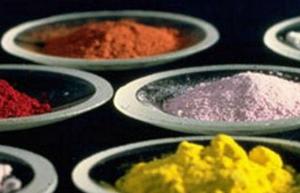There are probably few sports cooler than Formula 1. Nineteen Grands Prix, raced on five continents, 11 Constructors (teams) with 22 Drivers and all 33 are chasing the World Championships. Perhaps you didn’t know that Formula 1 actually bestows two World Championships each year, one to the Driver and one to the Constructor with the most points. Points are awarded to Drivers and Constructors for their position at the finish line with 10 points going to the winner, 5 points for second place and so on. Both driver and constructor who win will have earned that Championship. Speeding at up to 350kph around the circuit and experiencing forces up to 3.5G in corners in a closed cockpit with an average temperature of 500 Celsius all while maintaining a laser like focus, the physical and mental demands on both driver and car are considerable. The demands placed on the Formula 1 cars, each built to exacting specifications (the ‘Formula’ in the title) are no less considerable. This is perhaps more true in 2014 than ever before, as rule changes have greatly changed the Formula the cars must adhere to. These rule changes also lead to our rare metals connection.
The rule changes are not minor. They include: a change to a fuel injected 1.6L V6 engine with a maximum 15,000 RPM from a non-fuel injected 2.4L V8 with a max 18,000 RPM, an increase to 8 gears from 7, a cap on the amount of fuel that can be used in a race to 100kg with a maximum 100kg/hour flow rate, and an improved ‘Energy Recovery System’ (ERS). These last two rule changes have really forced the engine makers to step up their game. 100kg of fuel is about 30% less than what the average F1 car used last season (when there was no cap). Constructors (and the engine builders) have had to engineer around the loss of a third of their average fuel use, partially by heavily leaning on the ERS.
There are three companies supplying engines this year: Ferrari, Mercedes and Renault. Each has an ERS that is composed of two units: the ERS-K, which recovers kinetic energy while braking; and the ERS-H, which recovers heat energy from the exhaust gases. Both units use electrical generators to charge a battery that can then deliver up to an extra 160 bhp (brake horsepower) for up to 33 seconds per lap. This is an increase over the 2013 specs of 80 bhp for up to 6 seconds per. I’m sure we can see where the rare metal connection is; both the battery and ERS systems are chock full of our favourite REE elements.
It might be obvious to the ‘gear heads’ (‘petrol heads’ if you’re in the UK) where the good stuff is found in these cars. For those less automotively inclined, we’ll start with the easy one, lithium ion batteries. We well know that lithium ion batteries are very energy dense and are readily able to provide a high current when designed to. The second use is the permanent magnets made with REEs most likely contained in the electric generators attached to each ERS. Alas, the exact content of the motors is a trade secret; not much information is available on their composition. Stronger magnets (an REE specialty) increase power output and that is exactly what the engine makers, Constructors and Drivers want and need!
This is exciting for a couple of reasons. The first (and simplest) is it is always great to see rare metals used to push the limits of automotive engineering and it is undeniable that Formula 1 pushes up against that limit. The second is the implications this has for the technology contained in consumer cars. Formula 1 is like a competitive R&D lab, the solutions to engineering problems come in the pursuit of a championship but these technologies will be commercialized at some stage. The tech contained in this year`s crop of F1 cars can cut fuel consumption on the track by 30%, imagine what that could do for those of us who drive on regular old roads! The savings in fuel costs and CO2 emissions would be significant, to say the least.
While environmental concerns were not the primary rationale behind the rule changes, environmental regulations around consumer vehicles and the technologies these incentivize were. The thinking of Jean Todt, President of Fédération Internationale de l’Automobile, the governing body of Formula 1, is that the competition has to take into account regulations that are affecting vehicle technology. “What is the pinnacle of motorsport? It’s Formula 1. So Formula 1 has to take into consideration the evolution of the industry, otherwise it may not remain the pinnacle of motorsport“. So whether you’re whipping around the track in Shanghai at 350kph this weekend, or just cruising around in the sunshine, Rare Metals Matter!




You must be logged in to post a comment.